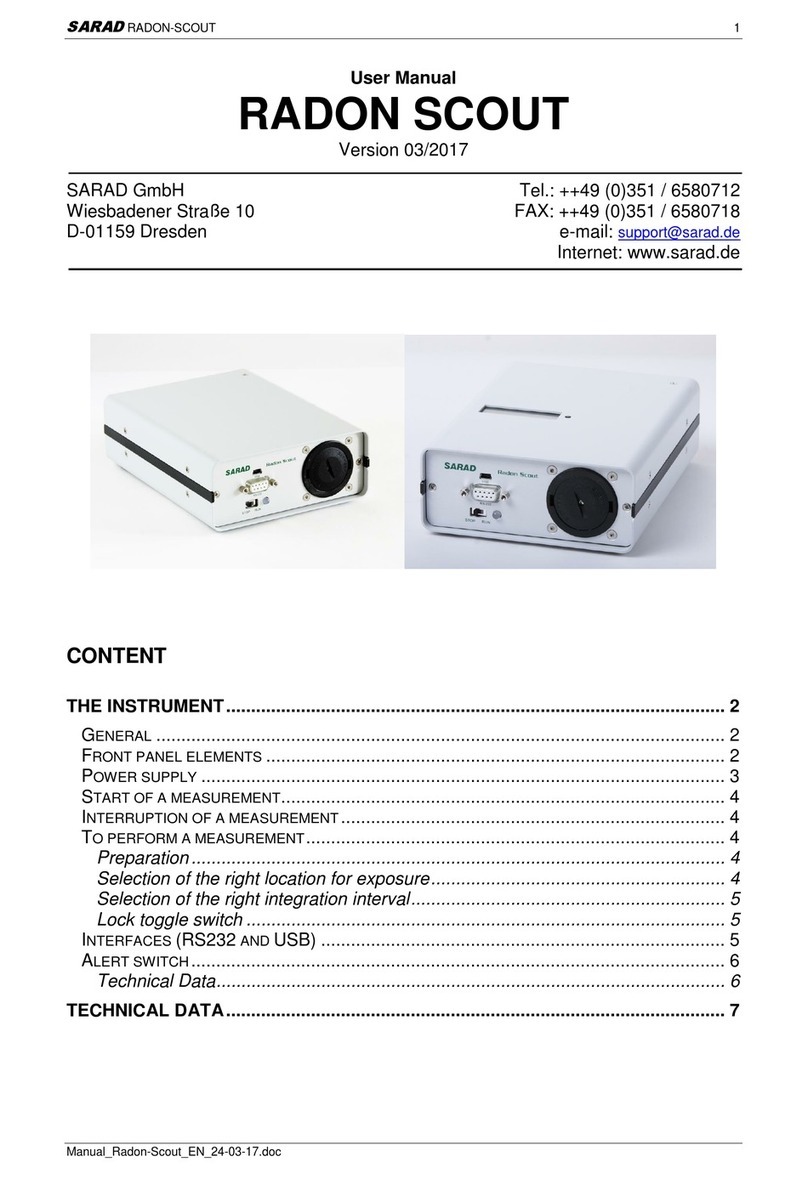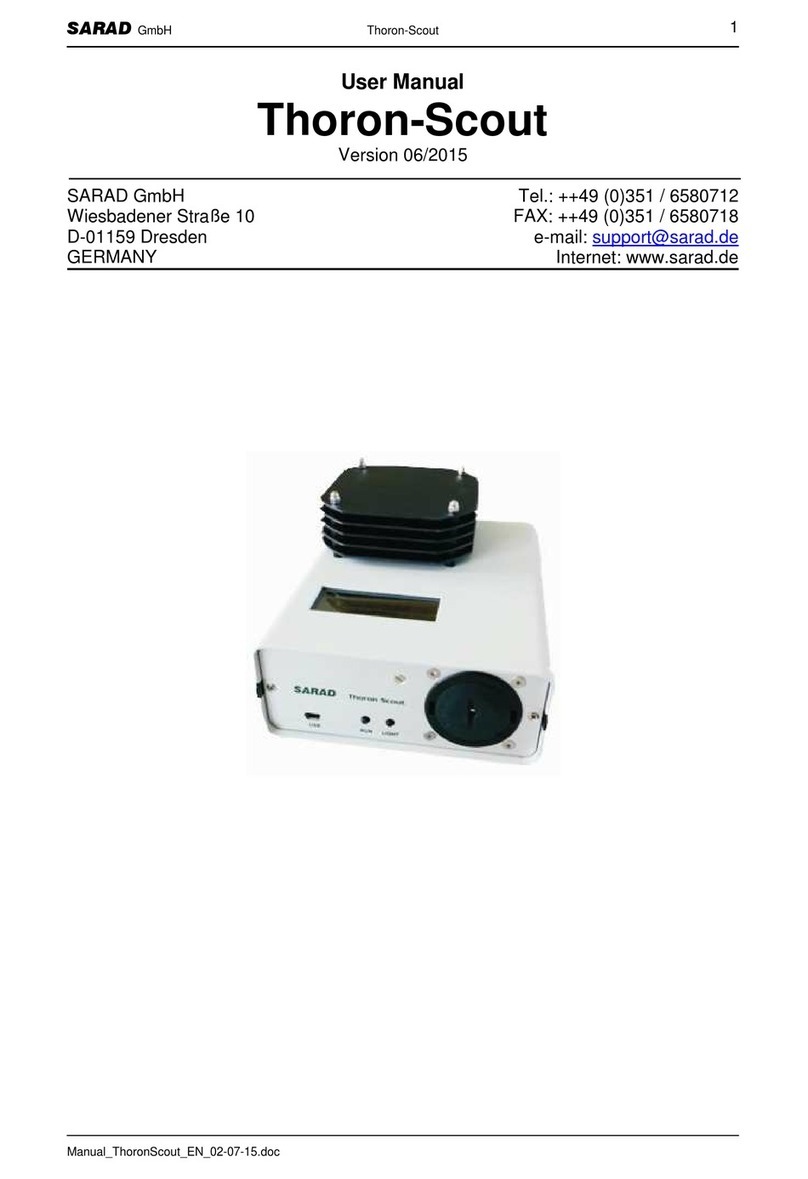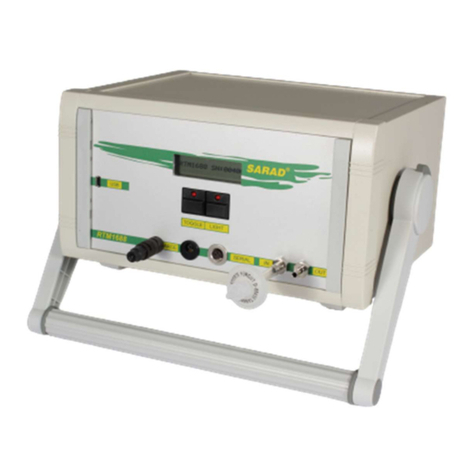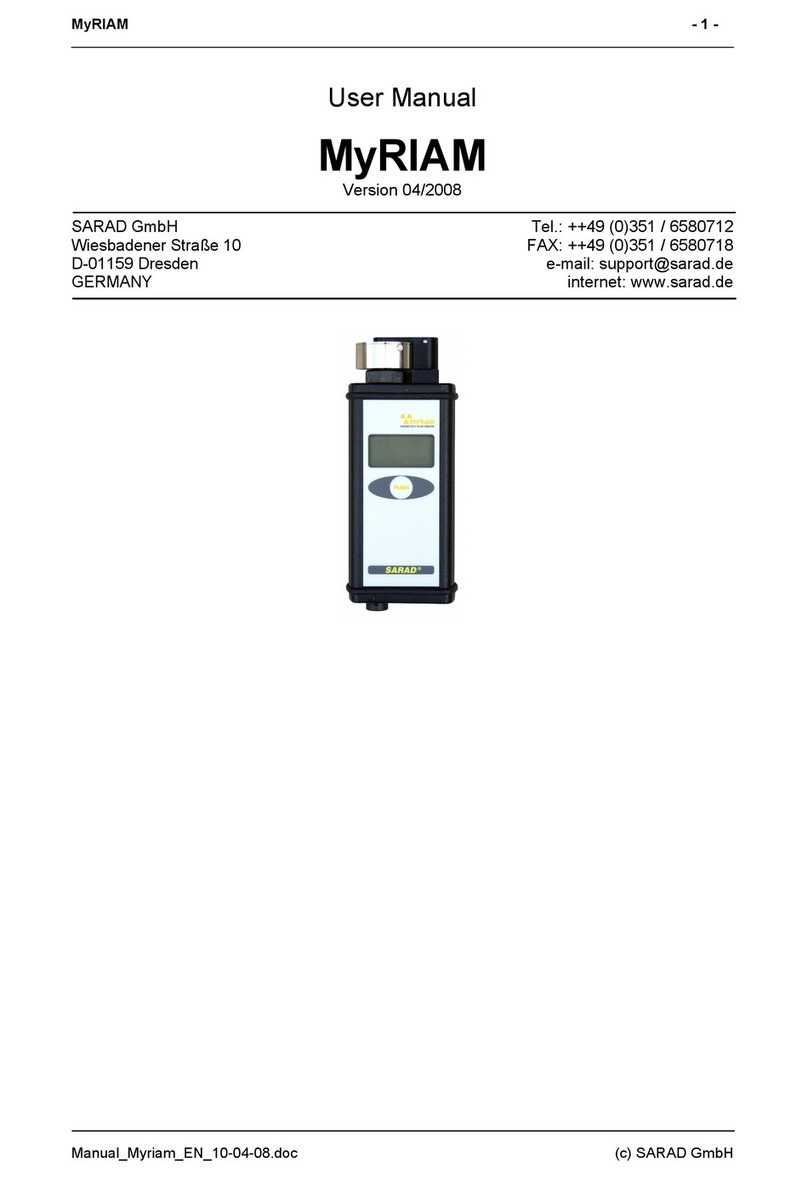SARAD GmbH 3
User Manual RTM1688-2 06-02-2019.docx
Important Hint
The determination of the activity concentration of Radon is always a radiometric
measurement, meaning a counting experiment. This causes a number of specific
circumstances which have to take in consideration by the one who is carrying out this task.
Only the knowledge of those particularities allows the correct set-up of a test and avoids
misinterpretations of the achieved results.
Please read carefully the next chapters “Theory of Operation” and “Statistical Error” to
become familiar with this kind of radiometric measurements.
Theory of Operation
The Radon (Rn-222) gas concentration will be measured by the short living daughter
products, generated by the Radon decay inside a measurement chamber. Directly after the
decay, the remaining Po-218-nuclei become charged positively for a short period, because
some shell electrons are scattered away by the emitted alpha particle. Those ions are
collected by the electrical field forces on the surface of a semiconductor detector. The
number of collected Po-218 ions is proportional to the Radon gas concentration inside the
chamber. Po-218 itself decays with a half-life time of only 3.05 Minutes and about 50%
(particles emitted towards the detector surface) of all decays will be registered by the
detector. The equilibrium between the Radon decay rate and Po-218 detector activity is
given after about 5 half-life times, say 15 Minutes. This time span defines the minimum
achievable response time to a Radon concentration step.
Now, the decay chain is continued by the both beta emitters Pb-214 and Bi-214 followed by
another alpha emitter, the Po-214. That means, each Po-218 decay causes one more
detectable decay by the Po-214 which is delayed about 3 hours because of the superposed
half-life times of those nuclides. The emission energies of Po-218 and Po-214 are different
and therefore it is possible to separate both nuclides from each other by alpha spectroscopy.
The RTM1688-2 offers two calculation modes for the Radon concentration, one (Slow)
includes both, Po-218 and Po-214 decays and the other one includes Po-218 only (Fast). The
advantage of the “Fast” mode is the quick response to concentration changes while the
“Slow” mode gives the sensitivity twice as high compared with the fast mode. The higher
sensitivity reduces the statistical error of a measurement which depends on the number of
counted decay events only. The user should select the calculation mode carefully with
respect to the application specific requirements (see next chapter).
In case of Thoron (Rn-220), the direct daughter product Po-216 (which also underlies the
ionisation process) is used to calculate the Thoron activity concentration. The half-life of Po-
216 is less than 1s and therefore the equilibrium state between gas concentration and
collected activity on the detector is present immediately.
































